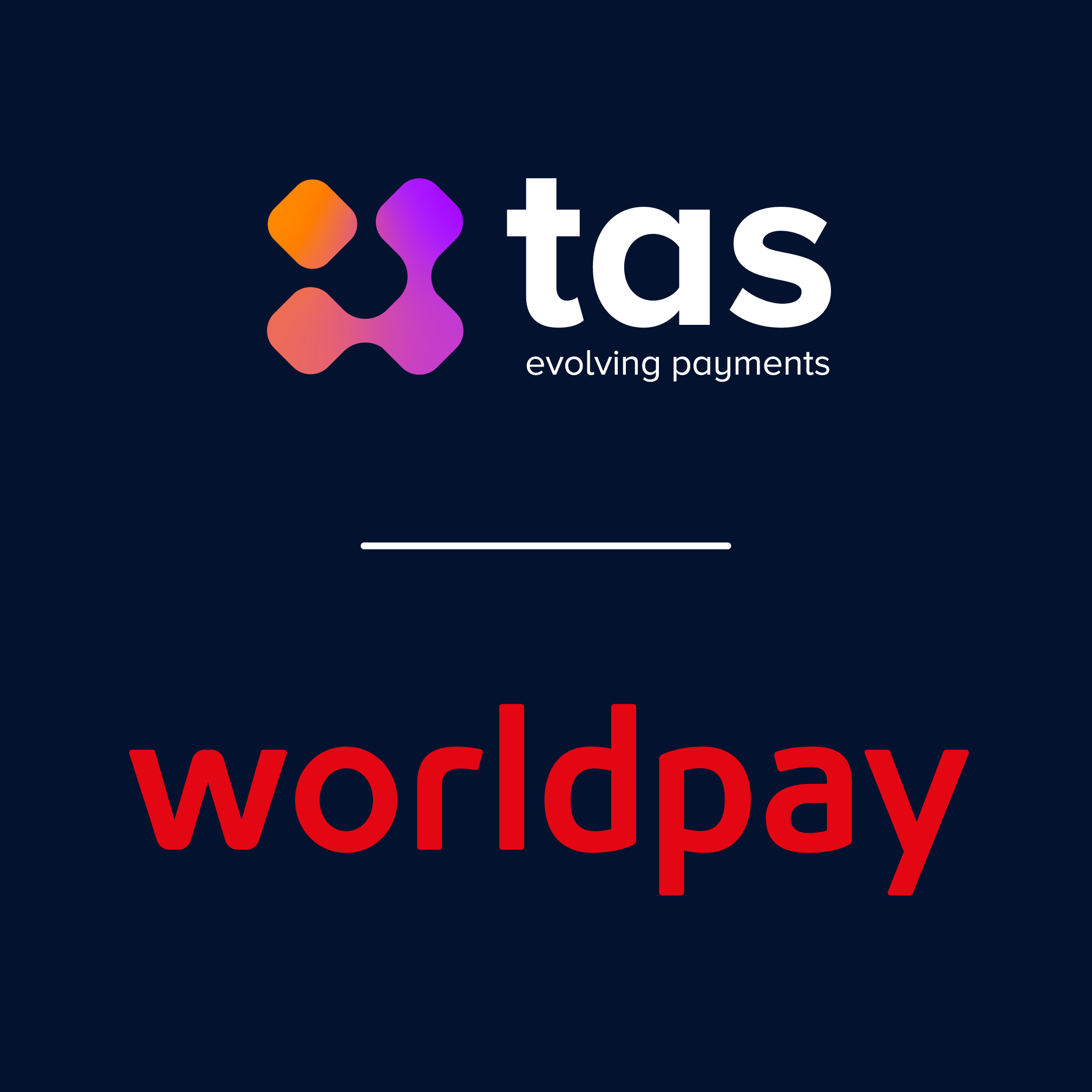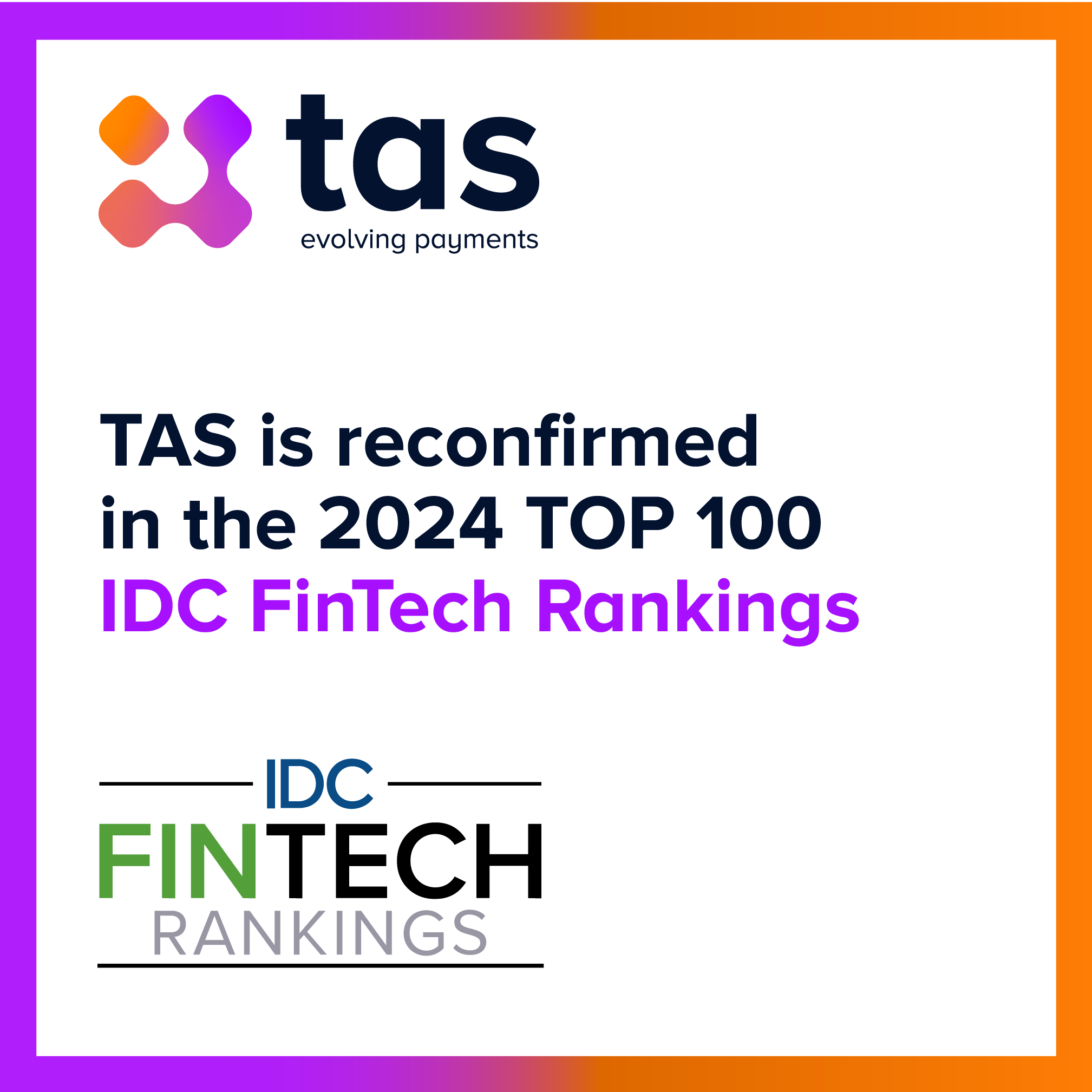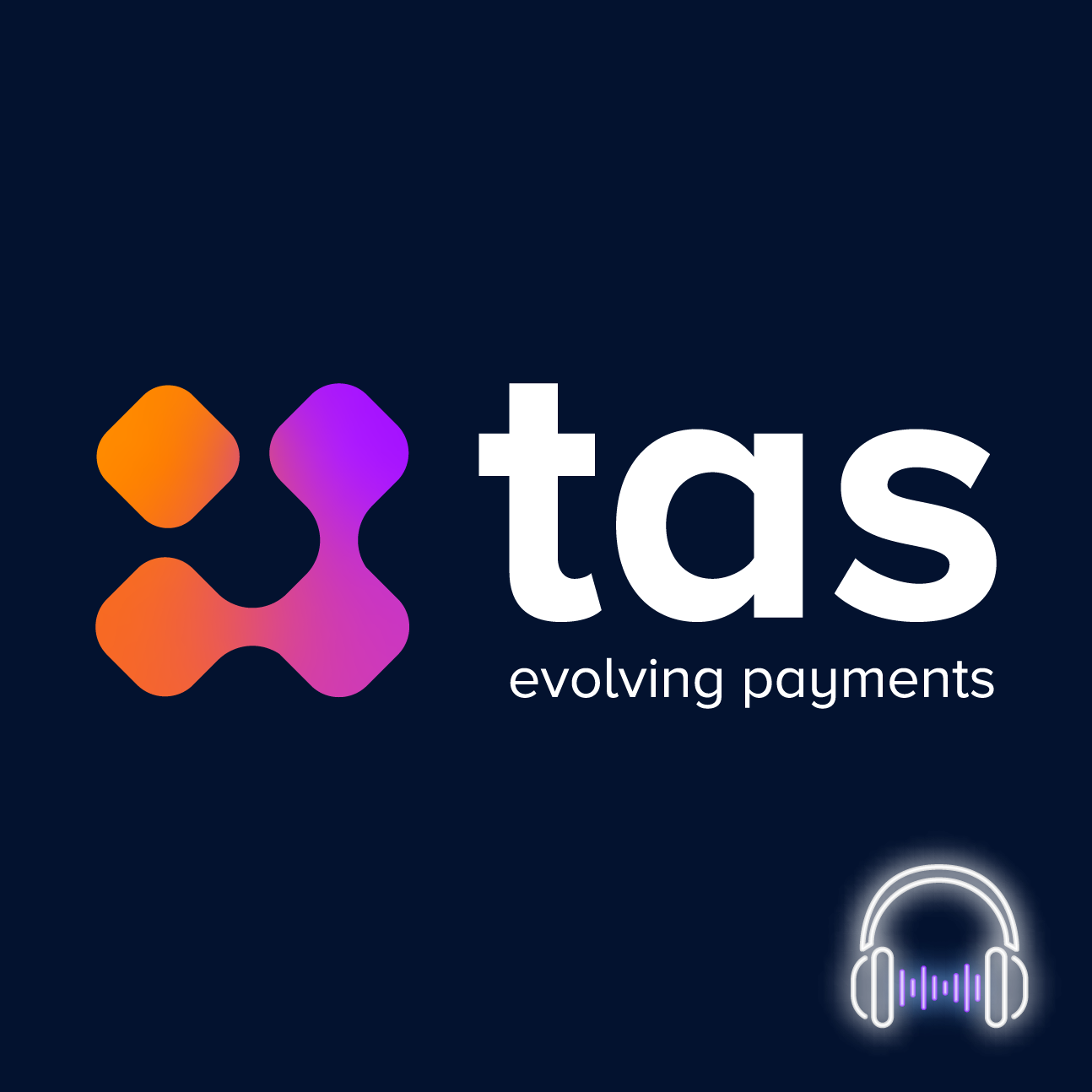Insights
A collection of our recent articles, white papers, webinars, reports and videos.
Worldpay and TAS together to simplify and enhance the competitiveness of pagoPA Payments

Milan – February, 27 2025 Worldpay, a global leader in payment solutions with a presence in 146 countries and the processing of over 50 billion transactions annually, and TAS, an Italian ICT company specializing in payment systems and transaction processing, announce a new partnership to simplify and broaden access to digital payments to the Public Administration.
A strategic partnership to offer merchants a turnkey solution for integrating pagoPA payments into their applications, thereby expanding opportunities for citizens and businesses.
The integration of Worldpay’s acquiring and processing solutions with TAS’s PayTAS platform enables merchants, app developers, and payment service operators to join the pagoPA network and easily offer the collection and payment functionalities of pagoPA, without the need to develop complex infrastructures. Already adopted by numerous banks, payment institutions, and many prominent public entities and creditors, PayTAS is a platform that streamlines the collection process and digitizes payments to the Public Administration and other entities participating in the pagoPA system. It facilitates connection to this system, both as a Technology Partner and as a Payment Service Provider (PSP).
“The collaboration with Worldpay allows us to extend the value of PayTAS and offer, even to third-party operators, a turnkey solution for pagoPA payments that can be easily integrated on online channels, physical networks, mobile devices, and state-of-the-art physical POS systems. With Worldpay, we are also working on introducing innovative payment processes and tools,” said Stefano Macchi, Technical Sales Representative at TAS.
“Thanks to this integration, anyone wishing to offer payments within the pagoPA network will be able to do so simply and without technical complexities, thereby expanding the available channels for citizens and businesses while ensuring competitive rates”.“Working with TAS and pagoPA is an important milestone, as it makes Worldpay part of the change and innovation in digital payments to the Public Administration. The advanced security and speed of transactions ensure a smooth and satisfying payment experience, affirming the cutting edge of our payment solutions.”— Phil Brown, Country Manager Italy and Malta, Worldpay.
TAS Achieves UNI/PdR 125:2022 Certification

Milan – December, 18 2024 – We are pleased to announce that TAS S.p.A., a leading provider of software and services for banking and financial applications in Italy, has obtained the UNI/PdR 125:2022 certification, recognizing TAS group’s commitment to workplace gender equality.
This certification marks a significant step toward creating an inclusive, equitable, and discrimination-free work environment where every individual, regardless of gender, has equal opportunities for growth and success.
The UNI/PdR 125:2022 certification, which provides guidelines for gender equality management systems, is a crucial tool for addressing the gender gap in the labor market. It promotes practices that foster a climate of inclusion, respect, and appreciation for diversity.
Valentino Bravi, CEO of TAS, commented: “This certification is not just a symbol of our company’s commitment; it represents a tangible act of social responsibility. Every employee, regardless of gender, has the right to fully express their potential, contributing to collective success. Our vision is to continually improve by providing a work environment where equality, employee empowerment, and mutual respect are at the core of everything we do.”
“Our journey does not stop here,” added Guido Isani, HR Director of TAS. “We will continue to monitor and enhance our policies and goals to ensure an increasingly inclusive workplace where gender equality is not just formal but a daily reality. Achieving this certification inspires us to carry on our mission with enthusiasm: promoting equality and inclusivity while contributing to building a conscious society.”
This recognition is the result of teamwork and the unwavering dedication of all TAS employees.
TAS Iberia is launching the R&D&I PIELSEN project to develop a 3D homeostatic enveloping architecture

TAS Iberia is launching the R&D&I PIELSEN project, which will develop a 3D homeostatic enveloping architecture to create a sensitive, intelligent, adaptive, and safe skin for building facades.
The body's ability to self-regulate to maintain internal balance in response to changes in the external environment is known as homeostasis. Human skin is a complex system that regulates the exchanges that occur between the internal organism and the external environment, whether they are thermal, acoustic, tactile, etc. As aids to this homeostasis, clothing and architecture must compensate for any differential that causes biological imbalance.
In this way, architecture is conceived as the human response to the aggressive factors of the environment in order to create conditions that make inhabiting a territory possible. The facades' envelopes are designed to fulfill a role similar to that of skin. They must always be designed to provide a coordinated response through interconnection with the rest of the building system’s components, generating an interstitial space between elements that can be understood as a homeostatic skin, reacting according to its environment and preserving the interior conditions of the dwellings, thus ensuring the habitability and health of the occupants.
From this premise comes the R&D&I project "PIELSEN: 3D Homeostatic Enveloping Architecture to create sensitive, intelligent, and adaptive skin for building facades," funded by the Ministry of Science, Innovation, and Universities under the 2017 Retos-Colaboración call. TAS Iberia, a leader in software, financial services, and sectors requiring a high level of communication and network security, has excellence partners including: FCC Construcción; Camilo José Cela University; and the Polytechnic University of Madrid through the Energy Efficiency and Internet of Things group of the Comprehensive Domotics Center (CeDInt-UPM). The project is expected to be developed over 36 months (2018-2020).
The PIELSEN System provides a new architectural element that is technically and economically viable, developed with a concept between bioclimatic architecture and Smart building. This is highly sought after today by a society increasingly aware of environmental issues, sustainability, and nature, leading to the development of solutions not only in the field of architecture and construction but also advancements related to their impact on health, well-being, the environment, energy resources, and technological innovation.
The goal is to create a skin, pores, and folds for buildings that can even generate their own energy (solar, wind, electrostatic, wind, piezoelectric...), integrating as a smart and innovative construction solution aimed at a market that reduces costs for end consumers, increases the use of clean energy, and focuses on studying the following innovations.
The research project aims to develop cutting-edge technological topics with future projection, including: cryptosystem security, closed blockchain, IoT systems based on SOA architectures, embedded devices, new sensors and biometric systems, environmental monitoring, FPGA RF/5G/IP, cloud control with Artificial Intelligence systems (AI, Machine Learning & Deep Learning), smart envelopes, Smart Cities, and Smart Building.
TAS is reconfirmed in the 2024 TOP 100 IDC FinTech Rankings

Milan, September, 2024 - We are proud to be among the Top 100 in the IDC FinTech Rankings for the 16th consecutive year, as a global provider of innovative solutions in card management, digital payments, financial messaging and capital markets.
The IDC FinTech Rankings evaluates and categorizes the top IT vendors based on 2023 calendar year revenues and the percentage of revenues exclusively attributed to financial institutions, including banks, capital markets firms, and insurers or directly to fintech solution providers for hardware, software, and/or services.
The new rules for Instant Payments

The recent approval by the European Parliament of new regulations on instant payments marks a new turning point in the payments landscape within the European Union.
Andrea Saracini, Head of IT Payments - BCC Sistemi Informatici Gruppo ICCREA, and Odisseo di Michele, Business Development Manager of TAS, discuss about the impact of the new instant payment regulations, highlighting the implications for both Corporate and Retail banking customers.
Andrea Saracini emphasizes the importance of cost equalization between ordinary and instant payments and the need to ensure security through consistency checks and behavioral analysis. The use of the cloud is explored to ensure efficiency and scalability of infrastructures, and a future is outlined in which the digital euro will represent a natural evolution towards fully instant payments.
Data and Anti-Fraud Measures: The Two Drivers for Adapting to Instant Payments

TAS is assisting banks in analyzing the necessary steps to comply with the upcoming implementation of instant payments, set for 2025. The focus is on managing higher transaction volumes instantaneously and the need to enhance anti-fraud measures.
More data to analyze in real-time and new security measures to implement are the two main concerns for the financial sector, grappling with the recent directive on instant payments. "Instant payment is a service that allows the payer to execute a transaction that is immediately credited to the beneficiary's account," says Odisseo Di Michele, Business Development Manager at TAS. "With the new regulation that came into effect a few months ago, instant payments are now treated like regular transfers, with settlement on the next business day, now instant. This service must be available across all channels where customers typically place payment orders, applying the same price to both types of transfers."
The Surge in Instant Transfer Volumes
Given equal fees, consumers might favor instant transfers, leading to a surge in transaction volumes to be managed. "In 2023, an average of 25 to 30 million SCT payments were processed daily in the euro area, with a daily settlement of 80 to 100 billion," Di Michele notes. "Currently, instant payments average a couple of million transactions per day, with a value of a few million. The increase in instant payments could reach peaks requiring significant infrastructure upgrades, and using the cloud might be the right approach."
Handling Corporate Payments
Instant processing won't be limited to retail transactions but will also include corporate transactions. "The corporate segment will also be assured instant transfers at the same price, and payments will need to be processed as soon as they are received. This will change the banks' payment management paradigm," says Di Michele. "Today, corporate flows are received and processed in the evening; tomorrow, banks will need to split payment orders and see if there are instant payments to execute immediately."
Verifying the IBAN-Beneficiary Match
The new requirements impact not only transaction volumes but also security levels, which must be raised without compromising the instant nature of these payments. "The regulation introduces mandatory and free verification of the match between the IBAN and the beneficiary's name (first and last name, legal entity, or VAT number). This aspect represents the most challenging change," highlights Di Michele. "The check must be performed by the beneficiary's bank, requiring instant communication between the ordering and beneficiary banks, operational across the euro area. Technically, this is not easy to implement."
Bank and Payer Responsibilities in Instant Payments
If the IBAN check matches, the payment proceeds instantly. Otherwise, the process becomes more complex. "The bank must ask the payer if they want to proceed despite the mismatch. Without verification, in case of fraud, the bank must refund the amount," Di Michele explains. "To combat fraud, it is necessary to leverage AI to study suspicious behavioral patterns and enhance financial education to make users aware of the risks."
The Adaptation Timeline
By January 2025, banks that do not yet offer the service must be ready to ensure the receipt of instant payments and activate additional controls on financial restrictions to limit AML and fraud cases, as well as adjust pricing. "By October next year, it will be mandatory to offer instant payments among the transfer types on all touchpoints, along with verifying the IBAN-beneficiary match, which will extend to EMIs and payment institutions by 2027," concludes Di Michele. "We are currently supporting banks in the analysis phase, focusing on application adjustments. We see good opportunities to offer a high level of service through a cloud infrastructure, integrating the needed services and optimizing payment processes to comply with the new requirements."
Source: AziendaBanca "Dati e antifrode: i due driver per adeguarsi ai pagamenti instant."
English version of the article by TAS.
TAS operates as a new Application Center in Italy

TAS announced the full operation of its services as a new Application Center in Italy.
The request by TAS to operate within the SITRAD (System for Telematic Data Transmission) as a standardized Application Center was approved by the CIPA Steering Committee on 24 May 2022.
From the following 1st July, TAS (in collaboration with Nexi Payments) began to provide a wide range of services related to domestic interbank applications through SITRAD, including Interbank Commercial Collections, Check Image Truncation and other fundamental interbank procedures such as Archive Alignment and Transferability, Portfolio Provisions, Transfers between Banks, Free Messages, Documented Operations and Interbank Charges Detection.
Starting from September 2023, TAS (in collaboration with Nexi Payments) has successfully activated the first banking group, Banco BPM, for the Check Image Truncation application, followed in April 2024 by the Crédit Agricole Italia group for the same application, while Banco BPM completed the activation of all services in the same month.
With the full commencement of operations as an Application Centre, TAS continues to demonstrate its commitment to providing cutting-edge solutions in the payments and financial services sector in Italy and beyond.
PierLuigi Bellinazzi, TAS Domestic ACH Manager, comments on this significant achievement: "Since the first days of my work at TAS way back in 1998, I have cultivated the ambition of seeing the company evolve into a Service Centre. Today I am therefore very proud, together with all our colleagues at TAS, to have become part of the small group of Italian Application Centers (Nexi Payments, BCC Sistemi Informatici, equensWorldLine and BANCOMAT). Thanks to our new status as an Application Center, we will be able to offer even more complete and attractive for services for Financial Institutions looking for solid and reliable partnerships in the field of financial operations."
New Rules for Instant Payments

The revolution of Financial Transfers across borders continues for an increasingly digitalized, fair, and efficient Europe.
The recent approval by the European Parliament of new regulations on instant payments marks a new turning point in the payments landscape within the European Union.
The recent provisions, which will come into effect 20 days after publication in the Official Journal of the EU, aim to ensure the promptness of money transfers between consumers' and businesses' accounts, representing a significant step towards greater financial efficiency and security.
With the new rules, all payment service providers must offer customers the possibility to make instant transfers that take no longer than ten seconds from approval, at any time and day. This will result in almost immediate liquidity for individuals and businesses, promising to significantly improve the daily operations of millions of Europeans. Additionally, the costs of instant payments must not exceed those of regular transfers.
The new regulation also outlines an efficient process for handling multiple orders of instant fund transfers sent in bundles to Payment Service Providers (PSPs), with particular attention to businesses in business-to-business (B2B) payments. When a Payment Service User (PSU) sends a package of instant fund transfer orders, the receiving PSP must immediately split the package, turning each order into individual transactions of instant credit transfer.
Furthermore, currently, payment and electronic money institutions are excluded from the definition of "entity" in Directive 98/26/EC, limiting their participation in instant euro transfers. The regulation aims to include them, allowing them to participate in Payment Systems and contribute to the adoption of instant fund transfers.
Another significant aspect of the regulation is the applicability of the new rules even in member countries that do not use the euro as the official currency, provided their bank accounts support regular euro transactions. This will ensure widespread sharing of the benefits of instant payments, further promoting economic integration among EU countries.
The new regulation emphasizes the importance of anti-fraud measures, requiring payment service providers to implement advanced fraud prevention systems and offering consumers tools to limit risks, such as the ability to set a maximum amount for instant transfers.
One of the main novelties is also the obligation for payment service providers to verify the correspondence of beneficiary names and IBANs for all transactions.
Additionally, the regulation ensures universal access to instant euro fund transfers for all Payment Service Users (PSUs). It states that there should be no disparities in the channels used to initiate instant payments compared to other types of fund transfers.
TAS's solution for Instant Payments fully covers compliance with the new regulation, with the possibility of adopting the platform modularly and as a service.
Thanks to ur long-standing relationships with most Italian banks, TAS has become a leader in Instant Payments solutions in Italy and has in-depth market knowledge and a unique ability to meet the needs of financial institutions in the product adoption journey.
With its expansion across Europe, TAS is well-positioned to drive innovation in the instant payments sector, offering a comprehensive, modular, and innovative solution that meets the needs of Italian and European banks.
Our commitment is indeed to be a true partner for banks, working closely with them to understand and meet their specific needs.
The modularity of the solution allows banks to choose only the necessary components and design a tailored architecture based on their specific requirements. Additionally, our solutions are based on a modern architecture designed to ensure complete service continuity, with real-time operations 24 hours a day.
Our offering model is based on a very flexible approach and can be implemented in the cloud, on-premises, or in SaaS mode, allowing for rapid and effective time to market.
Key features of TAS solution:
- Full compliance with SEPA Inst protocol requirements: complete processing time <10 sec., Timeout management.
- Cloud-native platform: for a turnkey offering with real-time 24 × 7 operations.
- Omni-channel: corporate portal, retail banking, back-office, etc.
- API interfaces: for payment initiation, reachability, and message requests.
- Message enhancement: message data enrichment through integration with core banking.
- Message screening: message verification through integration with screening systems (e.g., AML, Fraud, etc.).
- Message pairing and r-messages: Pairing of related messages and management of r-messages.
- "Four Eyes" principle: workflow can be defined with multilevel approval processes wherever necessary.
- Error alert: notifications can be sent in case of errors.
- Scalability and fault tolerance: the solution ensures full vertical and horizontal scalability.
- Certified full SWIFT message interface: the message network interface is a fully certified SWIFT application.
Contact our experts to find out how TAS can support you in implementing fast, effective, secure, and fully compliant solutions with the new regulations.
Investing in AI: From Intelligent Chatbots to Fraud Prevention

We continue to invest in innovation within the payment sector by introducing advanced artificial intelligence (AI) solutions aimed at significantly improving efficiency, security, and overall user experience.
Now available on our website is an intelligent chatbot named LIA, designed to respond to user inquiries quickly and efficiently. This is just one example of our innovation journey focused on two main areas: integrating advanced AI-based features into our products and optimizing internal processes through the effective implementation of AI.
Enhanced Security with "Fraud Protect"
Security in payment systems is an absolute necessity, especially in the digital context that poses continuous challenges and threats. "Fraud Protect," our fraud management solution, now incorporates advanced AI technologies to identify suspicious transaction patterns, significantly enhancing fraud prevention and anti-terrorism security. Additionally, the introduction of the intelligent chatbot "IVIC," which engages with users in potential risk situations, improves customer experience and helps reduce false positives.
Optimized Transaction Processing and Reconciliation
AI plays a crucial role in automating transaction processing and reconciliation processes. By reducing manual errors, we increase operational efficiency, ensuring greater accuracy in transactions. Predictive analysis plays a fundamental role in managing transaction peaks, allocating resources more efficiently. TAS's Banking Treasury product is evolving to implement AI-based predictive treasury models, capable of predicting liquidity needs in real-time, even on an intraday basis.
Global Impact of Artificial Intelligence in Payment Systems
We believe that the use of AI in the production process of payment systems has become essential and capable of influencing productivity, quality, and product innovation. From transaction processing to project management to customer support, AI is transforming every aspect of the process, opening new horizons in an ever-evolving industry. That's why we continuously invest in integrating new AI-based technologies into our products to stay ahead and ensure increasingly effective and secure payment solutions.
Contact us
Get in touch to discover how we can help in achieving your business goals
